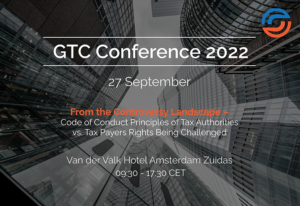The Importance of the Marcopolo Cases for Understanding the Application of the Brazilian Transfer Pricing Rules
Francisco Lisboa Moreira (Bocater Advogados) and Ana Paula Saunders (Vale S.A.)/July 10, 2019/Leave a comment
Brazilian Transfer Pricing Rules have been in force since 1996. When introduced, the intent of the legislator was clearly the prevention of tax evasion through manipulation of prices, though setting up a methodology easy to apply and to enforce. It is common sense that the methodology facilitates the fiscalization of tax officials and provides certainty to taxpayers using it[1].
But why certainty? We should remember that the two most common methods available are the CAP (cost-plus method) and the PRL (resale price method). The CAP is available for export operations and is defined as the average acquisition cost of goods and services, plus taxes and a fixed mark-up of 15{780f53c297e2c008074d23b865a0ce0b35a4f08852d8e1e49466a5a902c4e44e}. The PRL is determined as the weighted arithmetic mean of the goods, services or rights resale prices in Brazil, calculated in accordance with a formula that compares the imported input representation percentage in the cost of the goods and apply such percentage to the sale price of the finished goods, services or rights. The difference is the profit, which must fall within the appropriate fixed profit margin – ranging between 20{780f53c297e2c008074d23b865a0ce0b35a4f08852d8e1e49466a5a902c4e44e} to 40{780f53c297e2c008074d23b865a0ce0b35a4f08852d8e1e49466a5a902c4e44e} depending on the economic sector[2].
Based on such characteristics of the Brazilian Transfer Pricing Regime, scholars have posted views on certainty and predictability as the fundamental key for the MNE tax planning. This assumption can be verified in the two Marcopolo Cases before the Brazilian Administrative Tax Courts.
Marcopolo is a Brazilian MNE, public traded company, that assembles bus bodies (chassis) in Brazil for exportation, which accounts for a significant share of the company´s revenues. In 2005, the company was assessed for its offshore operation structures, as it used two offshore associated enterprises, Marcopolo International Corporation (MIC), incorporated in the British Virgin Islands (BVI), and Ilmot International Corporation (Ilmot), a company incorporated in Uruguay. BVI is blacklisted in Brazil, but Uruguay is not. Marcopolo shipped the production directly to the final costumers, but used a re-invoicing structure to sell to the associated companies (MIC and Ilmot), using the CAP method, which then issued the final invoice to the end costumers at market value.
The Brazilian Tax Authorities understood that the two associated enterprises lacked substance, as the invoices were issued and signed by Marcopolo employees in Brazil, the employees providing services to the foreign companies were actually Marcopolo´s employees and the volume sold by MIC and Ilmot would be the same volume exported by Marcopolo to such companies.
In other words, in the view of the tax authorities, MIC and ILMOT were seen as mere rebilling centers and were only used by Marcopolo in order to subtract prices and mask the real operations between Marcopolo and its final importers. Therefore, the authorities wanted to disregard the operation based in a supposed simulation, considering that the MIC and ILMOT, in their view, were just acquiring a Marcopolo product to resell it to the final importer.
Marcopolo 01[3] refers to the tax assessment for calendar-year 2000 and the Administrative Tribunal decided based on the supposedly lack of substance of MIC and Ilmot and applied the sham doctrine to consider the transactions as if Marcopolo had sold directly to the final customers. In Marcopolo´s view, it was his legal right to choose for the most favorable tax route and it does not mean that the structure had no substance nor a business propose. Besides the existence of both associated companies did not have the objective of reduction of Marcopolo´s tax basis, but instead to promote his international expansion.
On the taxpayer appeal, the Upper Chamber (CSRF) unanimously, ruled in favor of Marcopolo and considered that there was legitimate tax planning. At the trial, it was mentioned that there was indeed a substance in both companies and that was a business purpose in the operation. However, in Marcopolo 2, [4] the judges of the Tribunal had a different perspective when analyzing the case. The majority of the judges concluded that although MIC and Ilmot did not perform functions other than sales and contract functions – when the transfer pricing methodology was met (cost plus 15{780f53c297e2c008074d23b865a0ce0b35a4f08852d8e1e49466a5a902c4e44e}), the minimum profitability as required by the anti-avoidance rule was sufficient for it to be held legal[5].
The Marcopolo cases are important and they must be brought to the discussion again in the context of the Brazilian request to join the OECD (whose process begun in 2017) and the possible approximation of the Brazilian methods and the Transfer Pricing Guidelines of the OECD. The TP methods and the concept of substance, although seen to be an old discussion, had its importance revived in that context.
According to FERRAZ and CUNHA[6], the final BEPS reports to Action Plans 8-10 mention the possibility of disregarding a transaction if it lacks economic substance – even if it has successfully met the arm’s length standard through a transfer pricing method. The authors also post, in an opinion to which we agree, that the Brazilian reality is different than the one of a normal OECD situation. Therefore, according to the prevailing jurisprudence arising from Marcopolo, specifically Marcopolo 2, complying with the fixed margins “inflexible” methodology would suffice to not need to further test the substance of the transaction. But the substance requirement still needs to be further tested.
The Brazilian reality provides a different flavor, as the profits booked in any of those subsidiaries would be booked in Brazil on an accrual basis – and this is probably why no further cases like this one were brought to the courts. But it provides an important element for reflection on the direction of the Brazilian Transfer Pricing regime – should it be abandoned, strengthened or simply stay as an alternative for the arm’s length methods, in the case of a Brazilian OECD ascension.
Francisco Lisboa Moreira is a partner at Bocater Advogados. He obtained his LLM in International Taxation from NYU.
Ana Paula Saunders is a Tax Planning Manager at Vale S.A. in Brazil. She obtained her LLM in International Tax Law from Leiden University.
END NOTES
[1] As recognized in the United Nations Transfer Pricing Manual for Developing Countries. United Nations: 2017, p. 540.
[2] For a detailed description on the methods, please see OLIVEIRA, André Gomes de. And MOREIRA, Francisco Lisboa, The Brazilian Transfer Pricing Regime, 71 Bull. Intl. Taxn. 6 (2017), Journals IBFD.
[3] CARF Decision 105-17.083, dated June 25, 2008.
[4] CARF Decisions 1402-00.752 (calendar-years 2000 and 2001), 1402-00.753 (calendar-year 2003) and 1402-00.754 (calendar-years 2004-2008), all dated August 30, 2011.
[5] SCHOUERI, Luis Eduardo and GALENDI Jr., Ricardo André. Chapter 9: Brazil In DOURADO, Ana Paula et. Al., Tax Avoidance Revisited in the EU BEPS Context. IBFD: 2017, p. 15. On the same sense, SILVEIRA, Rodrigo Maito da and CASTRO, Leonardo Freitas de Moraes. International Tax Planning in Brazil: What to Expect Following Recent Case Law. In 572 Bull. Intl. Taxn. 11 (2010), Journals IBFD. FALCAO, Tatiana. Brazilian Report to the IFA Congress 2008 (Seoul), Vol. 1, p. 22, and FERRAZ, Luiz Felipe Centeno and CUNHA, Maria Fernanda Fidalgo Fernandes da. Planejamento Tributário com Preços de Transferência: Uma análise dos casos Marcopolo 1 e 2. In CASTRO, Leonardo Freitas de Moraes e and MOREIRA, Francisco Lisboa. Manual de Preços de Transferência: Brasil, OCDE e BEPS. Vol. 2. Quartier Latin: São Paulo, p. 71.
[6] FERRAZ, Luiz Felipe Centeno and CUNHA, Maria Fernanda Fidalgo Fernandes da. Op. Cit., p. 79.





